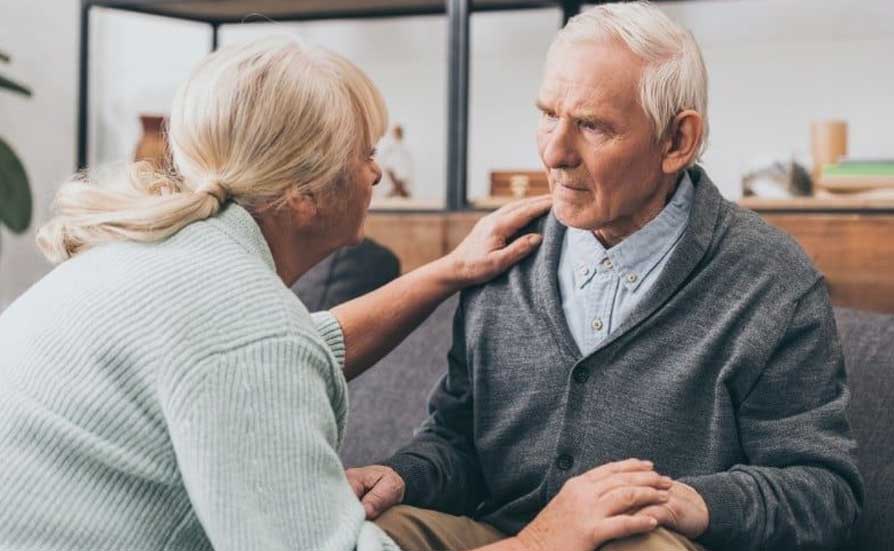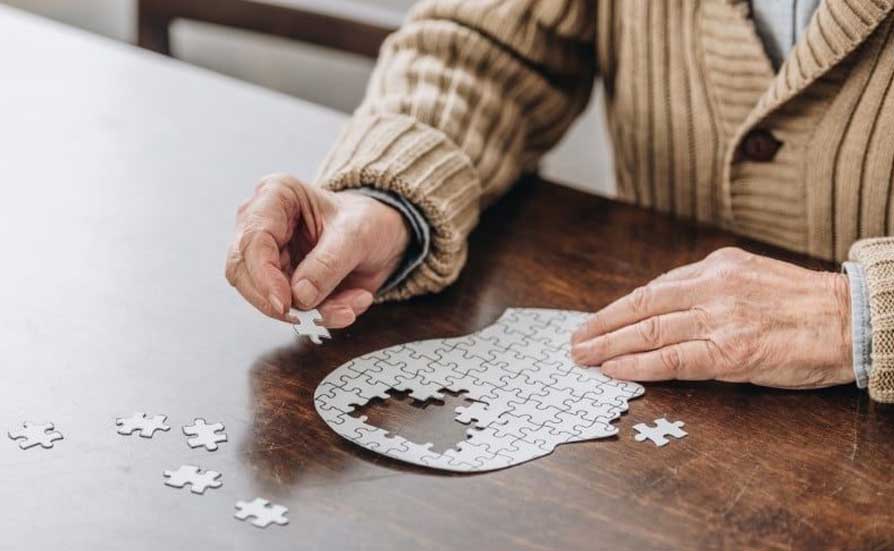
What’s the Difference Between Occupational Therapy and Physical Therapy?
July 7, 2021
Tips on How to Eat Healthy
July 8, 2021End Stage of Parkinson’s
The progression pf Parkinson’s disease
Parkinson’s develops differently in each patient. Some deteriorate to the end stage of Parkinson’s rapidly, while others remain strong and active for years, and there’s no clear explanation for why.
While exercise and physical therapy can slow disease progression, there’s no known cure. Even the healthiest patients will eventually decline until the end stage of Parkinson’s, when they are left completely dependent on family and caretakers.
For those with loved ones who’ve been diagnosed with Parkinson’s, it helps to know the road ahead. An awareness of what’s to come makes it easier to offer help as conditions decline, and ask for help when they become too much to manage alone.
Stages of Parkinson’s disease
While there may be no cure, Parkinson’s follows a predictable path. In the early stages, symptoms are mild and inconvenient; by the end stages, symptoms are incapacitating.
- Stage One: Patients begin to experience tremors on one side of the body. One arm or leg will feel heavy, but not to the point it interferes with daily life. Symptoms may be so slight, they can be sometimes overlooked.
- Stage Two: Symptoms are clearly visible and affect both sides of the body. Patients become stooped as tremors grow more pronounced. Muscles are rigid, making it difficult to bend their trunk, arms, and legs; facial muscles begin to “freeze” at this stage, creating an almost mask-like appearance. At this stage, however, balance is not yet impaired, so most patients continue to live independently.
- Stage Three: Balance becomes increasingly compromised, and reflexes and coordination deteriorate, elevating serious risks of falling. Muscles grow so stiff that patients can only take short, shuffling steps. Tremors become more serious, and yet most patients can still complete daily tasks, though it requires more time and greater effort.
- Stage 4: Patients can no longer live on their own. Balance is so weak that while it may be possible for them to stand, they will not be able to move without a walker. Some freeze periodically, unable to move for short periods of time.
- Stage 5: Patients cannot walk or stand without assistance and require round-the-clock care.
Non-motor symptoms
Parkinson’s affects more than balance and motor skills. As it progresses, nearly every other part of the body deteriorates as well.
Throughout the course of the disease, patients may experience:
- Loss of smell
- Insomnia
- Fatigue
- Body aches
- Tooth decay
- Dry mouth
- Dry eyes
- Double vision
- Low blood pressure
- Incontinence
- Constipation
- Trouble swallowing
- Trouble speaking
Some of these symptoms can be treated with diet, exercise, and medication. These can prolong patients’ quality of life for a time, but may not be effective in the end stages of Parkinson’s.

Mental health symptoms
Parkinson’s damages the brain and over time this can lead to changes in behavior. They appear early in some patients, late in others. Not all patients experience the same symptoms; they are also not always debilitating when they initially appear.
The most common mental issues seen in Parkinson’s patients include:
- Forgetfulness
- Shortened attention span
- Inability to focus
- Confusion
- Anxiety
- Depression
- Hallucinations
- Loss of inhibitions
In certain cases, brain damage becomes so severe the patient slides into dementia. Patients may become hostile, suspicious, or even abusive. If the prefrontal cortex (which controls inhibitions) has been impaired, they might make sexually suggestive comments or remove their clothes in mixed company.
Patients are particularly prone to acting out during the end stages of Parkinson’s. When it happens, the best strategy is to remain calm and redirect their attention.
Interacting with Parkinson’s disease
Here are a few simple, but effective strategies to employ when faced with understandably uncomfortable scenarios:
- Change the subject. When symptoms manifest, sometimes talking about something else can help calm patients down. Whether it’s a recollection from their past or just a different topic, changing the conversation can turn chaos into calm.
- Take it outside. Fresh air and sunlight can help improve oxygen flow and trigger mood stabilizers in the brain.
- Get busy. Having an activity, especially something patients find meaningful, can help set them on a more even keel. Old hobbies or household tasks generally work best in these instances.
- Have a snack. Most of us get cranky when we’re hungry or thirsty; patients with Parkinson’s are no different. A light snack, some water or juice can help stabilize behaviors.
- Adjust the ambience. Sometimes, something as simple as a room’s brightness or temperature can contribute to a patient’s acting out. Too much noise can overstimulate; too little light can cause anxiety; excessive heat or cold can trigger anger. Adjusting lighting and temperatures, turning the volume down on the TV or the radio, or simply offering a cozy blanket may help restore the peace.
- Ask for help. Looping in a patient’s doctor may reveal underlying medical conditions, like urinary tract infections, behind the sudden shifts in behavior.

Managing symptoms in the end stages of Parkinson’s
As Parkinson’s worsens, it becomes increasingly challenging for families to provide care without professional assistance. Families may also consider residential care options to ensure that patients receive the kind of round-the-clock care they now require.
Due to the degenerative nature of the disease, patients in the end stage of Parkinson’s are at severe risk of:
- Rashes
- Bed sores
- Malnutrition
- Dehydration
- Urinary tract infections
- Digestive problems (e.g., gastritis, stomach ulcers, delayed gastric emptying)
To avoid serious complications, patients require 24-hour assistance.
Many techniques used include:
- Shifting patients every two hours. Adjusting how patients are seated or supine helps prevent their weight from opening wounds on the skin.
- Toileting. Besides walking patients to the bathroom, caregivers help them undress and clean up afterwards.
- Changing diapers. If the patient is confined to bed, their diapers need to be checked and changed every two hours to prevent serious infections.
- Bathing and grooming. Patients who can’t get in and out of the shower require sponge baths. Patients also need help trimming their nails, combing their hair, and brushing their teeth.
- Assistance with eating. Eating can be very challenging for patients. Caregivers may have to push patients to eat, offering small portions of whatever foods they can consume. Because of difficulties experienced when chewing and swallowing, soft foods may be all they can eat at this stage. Oatmeal, scrambled eggs, yogurt, applesauce, mashed potatoes, and smoothies are frequent choices; solid food is cut up into bite-sized pieces to ensure patients can eat safely.
- Keeping patients hydrated. Patients need to drink 6-10 glasses of water a day to stay properly hydrated. Caregivers assist with the process, holding bottles, cups and straws as needed.
- Organizing medications. Patients are usually prescribed several medications to reduce shakes and control movement. Medications need to be carefully organized and all caregivers need to be briefed on their instructions.
Providing this level of care is usually too much for a family to bear. Even Home Care providers are limited in terms of how many hours they can devote to patients, making residential care a family’s best option. (gardensdental.com.au)
At Verona Court, Parentis Health’s residential facilities, there are multiple skilled nurses and caregivers onsite at all times, ready to help patients whenever, however needed.

When is it time for hospice care?
Even though the course of Parkinson’s is predictable, the end stage of Parkinson’s is not. Despite its severity, people don’t pass on from Parkinson’s; rather, the disease leaves patients vulnerable to injury or infection which, in their weakened conditions, often proves to be fatal.
Consequently, knowing when to call hospice is not a simple matter of tracking symptoms. Physicians should always be consulted if patients are experiencing:
- Persistent pain
- Irregular breathing
- Shortness of breath
- Rapid weight loss
- Difficulty swallowing
- Systolic blood pressure below 90
- Frequent falls or poor balance
- Recurrent infections
- Constant nausea
Once a doctor has given the patient a six-month prognosis, a hospice team can be called in. Patients can receive hospice wherever they call home—residential care facilities, retirement communities or wherever they’ve been residing.
Hospice serves both patients and families alike. It also gives patients a chance to spend their final weeks or months free from pain, while lifting a huge burden from families.
Hospice teams provide comfort care to patients. Comfort care provides relief from pain, nausea, and shortness of breath. Working closely with the patient’s doctor, the hospice team creates a personal care plan to manage symptoms. Nurses check in regularly to adjust pain medication. Home Health aides tend to the patient’s hygiene. Case managers secure high-grade equipment, such as hospital beds or oxygen machines.
Counselors are on-hand as well, providing emotional and spiritual support to patients and families. Their presence is particularly helpful for families, providing support as they process their emotions and make peace with their loved one before they pass on.
At Parentis Health, hospice counseling continues on after patients pass, helping families further, culminating in an annual Celebration of Life ceremony to honor loved ones lost.
Contact UsTo learn more about our hospice services, please contact us.

